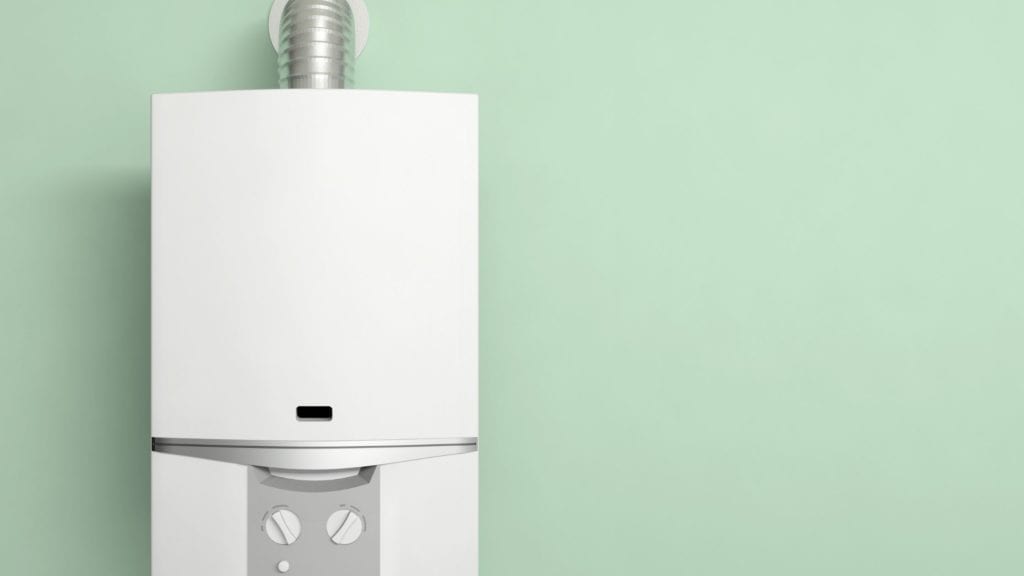How to Get “Instant” Hot Water with a Standard Water Heater
So you wake up, it’s Monday morning, you get out of bed and get ready for work. When you turn on the shower you know you have around 5 minutes to put your contacts in, brush your teeth, and open Twitter to find out what happened while you were asleep, then the water finally gets warm enough to step in and clean up for the day ahead. But why are you waiting 5 minutes?
Water Heaters
The average household wastes around 40 gallons of water in a day, and over 14,000 gallons in a year! Aside from just being plain environmentally unfriendly, it also adds up and could be the difference between a great family vacation or a boring weekend at home. Sure, you could have a tankless water heater at every faucet and showerhead, but that’s an extreme and expensive solution. Fortunately, there’s a way to get near instant hot water from your faucets and fixtures for only a few hundred dollars. You can get what is known as a hot water recirculation pump for on-demand hot water whenever you need it. So why do you need this? Why do you have to wait for hot water if you don’t have one of these pumps?
Waiting for Hot Water
In a conventional style water heater the hot water is under pressure and enters the lines of your home where it sits until it is needed. While it’s sitting in the lines waiting for you to open a valve on your shower or sink faucet, it’s constantly cooling off until it’s cold.
When you turn on the hot water faucet, all the cooled off water has to get out of the way of the fresh hot water from the water heater. Depending on how far from the heater your faucet is, you might have to wait as long as ten minutes before you get truly hot water to come out.
Another factor in determining the temperature of the water leaving your faucet is the temperature of the pipes themselves. If they’ve cooled down all night they’ll be sapping heat from the hot water as it flows through them until they’re just as hot as the water itself, so you might wait even longer to get the hottest water!
What is a Hot Water Recirculation Pump?
This device pulls hot water out of your water heater and pushes the cooled water in the hot lines of your home back into the water heater through a recirculation loop that connects to the cold water line. Instead of waiting for all the cooled off water to exit the faucet and go down the drain, it is now staying within the plumbing of your house and going back to the heater to warm up while the already warmed up water is sent directly to the faucet. In the end you shave about 60%-80% off of the normal time spent waiting for hot water, and you save gallons of water every day by not pouring it down the drain as you wait for it to heat up.
Recirculation Pump: Water Heater Mounted
This is the cheapest pump option, as it takes advantage of your existing plumbing and doesn’t require the installation of a recirculation line. A pump is mounted on your water heater at the hot line going out, and at the farthest fixture away from the water heater a small valve is installed which uses a thermostatic sensor to determine when it opens or closes. When it opens, water from the hot line flows into the cold line and recirculates through the house until the water entering the valve is at the right temperature. When it closes, hot water is in the line and can be accessed immediately by opening the faucet valves. There is also a timer installed on the pump which can be set to circulate hot water through your system at certain times throughout the day, like just before you wake up and just before you normally cook dinner, so that you really never have to wait for hot water.
Recirculation Pump: Electronic
This type of recirculation pump system consists of a 120 volt pump with integrated electronic controls and a thermostatically controlled zone valve. This option is little pricier but has distinct advantages over other pumps. Instead of being operated solely by a timer or a thermostatic valve, it can be operated by a remote control, a switch, or even a motion detector. For the motion detector you would usually have it installed in your bathroom, kitchen, or anywhere else where you normally use hot water. As the sensor detects your presence it signals the pump to turn on and the rest works exactly the same. One major difference between the Mounted Pump option and this one is that the Electronic Pump is installed at the furthest fixture location from the water heater, and may require an electrician to install a plug under the sink so the unit can receive power.
As you can see, there are many different ways to get hot water where you need it, when you need it. The cost savings really add up, and you recoup your investment within a year or two at most just by saving all that water. In all, it’s a great idea that not only saves you money and makes your house that much greener, it also saves you time whenever you shower, wash your hands, or cook. And how much is your time worth to you?
Contact Us Today!
Prevent your money from going down the drain and give Do It Right Plumbers a call at (714) 862-2393 or visit online at www.DoItRightPlumbers.com. We offer quality plumbing services to Orange, CA and beyond.

